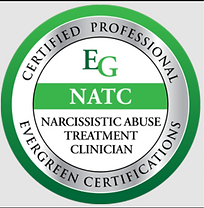

Soteldo Psychothérapie
Narcissistic Abuse Recovery Clinic
Certified Narcissistic Abuse Treatment Clinician

(343) 312-5283
Deuil/perte non résolus
SNOMED Terms
-
Atypical depressive disorder
-
Bipolar I disorder, single manic episode
-
Bipolar II disorder, most recent episode major depressive
-
Borderline personality disorder
-
Chronic bipolar II disorder, most recent episode major depressive
-
Depressive disorder
-
Major depression single episode, in partial remission
-
Major depression, single episode
-
Mild bipolar I disorder, single manic episode
-
Mild bipolar II disorder, most recent episode major depressive
-
Mild major depression, single episode
-
Mixed anxiety and depressive disorder
-
Moderate bipolar I disorder, single manic episode
-
Moderate bipolar II disorder, most recent episode major depressive
-
Moderate major depression, single episode
-
Reactive depressive psychosis, single episode
-
Recurrent psychotic major depression in full remission, single episode
-
Severe bipolar I disorder, single manic episode
-
Severe bipolar II disorder, most recent episode major depressive with psychotic features
-
Severe bipolar II disorder, most recent episode major depressive without psychotic features
-
Severe bipolar II disorder, most recent episode major depressive, in partial remission
-
Severe bipolar II disorder, most recent episode major depressive, in remission
-
Severe major depression, single episode
-
Single major depressive episode, severe, with psychosis
Goals
-
Alleviate the suicidal impulses/ideation and return to the highest level of previous daily functioning.
-
Stabilize the suicidal crisis.
-
Placement in an appropriate level of care to safely address the suicidal crisis.
-
Reestablish a sense of hope for self and the future.
-
Cease the perilous lifestyle and resolve the emotional conflicts that underlie the suicidal pattern.
Behavioral Definitions
-
Recurrent thoughts of or preoccupation with death.
-
Recurrent or ongoing suicidal ideation without any plans.
-
Ongoing suicidal ideation with a specific plan.
-
Recent suicide attempt.
-
History of suicide attempts that required professional or family/friend intervention on some level (e.g., inpatient, safe house, outpatient, supervision).
-
Positive family history of depression and/or a preoccupation with suicidal thoughts.
-
A bleak, hopeless attitude regarding life coupled with recent life events that support this (e.g., divorce, death of a friend or family member, loss of job).
-
Social withdrawal, lethargy, and apathy coupled with expressions of wanting to die.
-
Sudden change from being depressed to upbeat and at peace, while actions indicate the client is "putting his/her house in order" and there has been no genuine resolution of conflict issues.
-
Engages in self-destructive or dangerous behavior (e.g., chronic drug or alcohol abuse; promiscuity, unprotected sex; reckless driving) that appears to invite death.
Diagnoses
-
Bipolar I Disorder
-
Dysthymic Disorder
-
Major Depressive Disorder, Single Episode
-
Major Depressive Disorder, Recurrent
-
Bipolar II Disorder
-
Borderline Personality Disorder
What is Suicidal Ideation?
Suicidal ideation, often referred to as suicidal thoughts or thinking, is when someone considers or contemplates ending their own life. It's important to understand that suicidal ideation doesn't necessarily mean someone intends to act on those thoughts, but it does indicate a serious cry for help and a sign of emotional distress.
Here's a breakdown of suicidal ideation:
-
Thoughts and Feelings: Suicidal ideation involves thoughts, feelings, or wishes of wanting to die or end one's own life. The intensity of these thoughts can vary, and they may be fleeting or persistent.
-
Not Always a Plan: While some people with suicidal ideation may develop a specific plan or method, it's not always the case. The thoughts themselves are a cause for concern.
-
Serious Warning Sign: Suicidal ideation is a significant warning sign that someone is struggling and needs help. It's important to take these thoughts seriously.
Types of Suicidal Ideation:
-
Passive Suicidal Ideation: This involves wishes or thoughts of death but without a specific plan or intent to act on them. Someone might say things like "I wish I were dead" or "Life isn't worth living."
-
Active Suicidal Ideation: This involves current and specific thoughts about suicide, potentially including a plan or method. This is a more serious indicator of immediate risk.
Effects of Suicidal Ideation
Here are some of the potential effects of suicidal ideation:
Emotional Distress: Individuals may experience overwhelming pain and suffering, which can be difficult to cope with on their own.
Mental Health Conditions: Suicidal ideation is commonly associated with mental health conditions such as depression, anxiety disorders, bipolar disorder, post-traumatic stress disorder (PTSD), and borderline personality disorder (BPD).
Social Isolation: Individuals experiencing suicidal ideation may withdraw from social interactions and isolate themselves from friends, family, and support networks.
Impaired Functioning: They may have difficulty concentrating, making decisions, or performing tasks at work, school, or home.
Impact on Relationships: Loved ones may feel helpless, frightened, or unsure of how to provide support.
Physical Symptoms: Suicidal ideation can manifest in physical symptoms such as changes in appetite, sleep disturbances, fatigue, and physical pain.
Increased Risk of Suicide: While not everyone who experiences suicidal thoughts will act on them, these thoughts should always be taken seriously.
Treatment Challenges: Addressing suicidal ideation often requires comprehensive mental health treatment, including therapy, medication, and safety planning.
Overall, suicidal ideation can have profound and far-reaching effects on individuals' lives, impacting their emotional well-being, relationships, functioning, and overall safety. It's essential for individuals experiencing suicidal thoughts to seek help and support as soon as possible to address their distress and prevent potential harm.